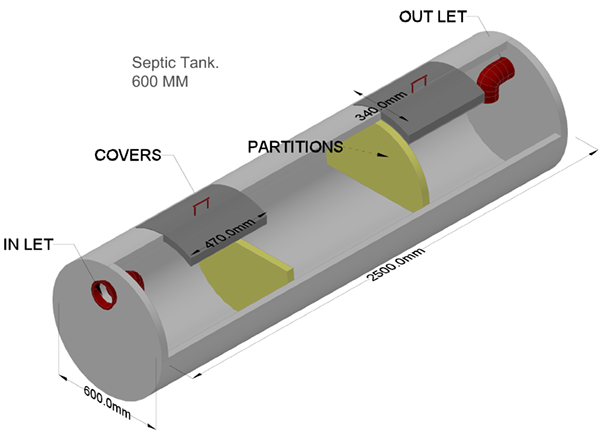A septic tank generally consists of a tank (or sometimes more than one tank) of between 700 and 15000 liters connected to an inlet wastewater pipe at one end and a septic drain field or Soak pit at the other. In general, these pipe connections are made via a T pipe, which allows liquid to enter and exit without disturbing any crust on the surface. Today, the design of the tank usually incorporates two chambers (each equipped with a manhole cover), which are separated by means of a dividing wall that has openings located about midway between the floor and roof of the tank.
Diagram of Septic Tank

Waste water enters the first chamber of the tank, allowing solids to settle and scum to float. The settled solids are anaerobically digested, reducing the volume of solids. The liquid component flows through the dividing wall into the second chamber, where further settlement takes place, with the excess liquid then draining in a relatively clear condition from the outlet into the leach field, also referred to as a drain field or seepage field, depending upon locality. A percolation test is required to establish the porosity of the local soil conditions for the drain field design.
The remaining impurities are trapped and eliminated in the soil, with the excess water eliminated through percolation into the soil (eventually returning to the groundwater), through evaporation, and by uptake through the root system of plants and eventual transpiration.
